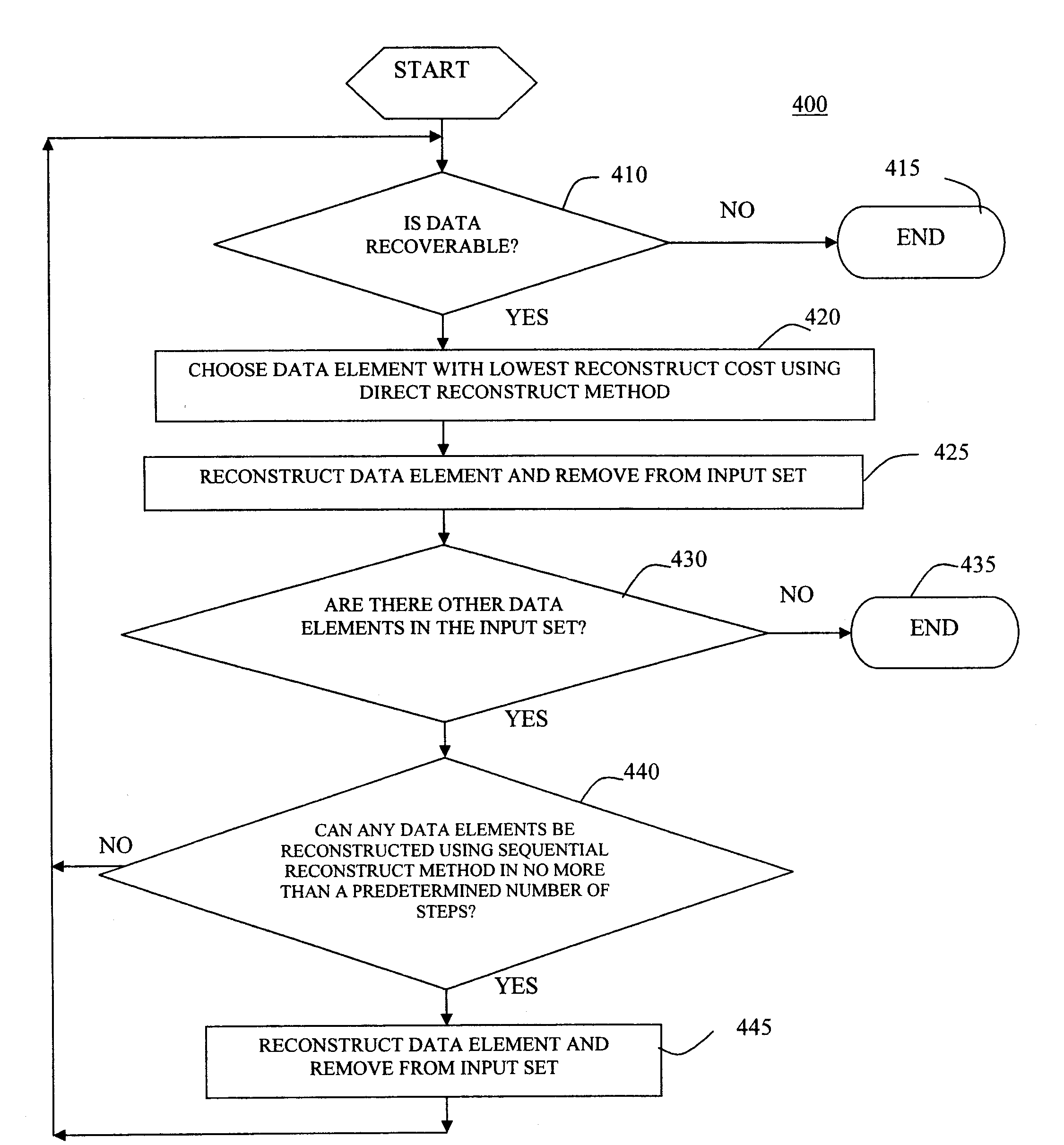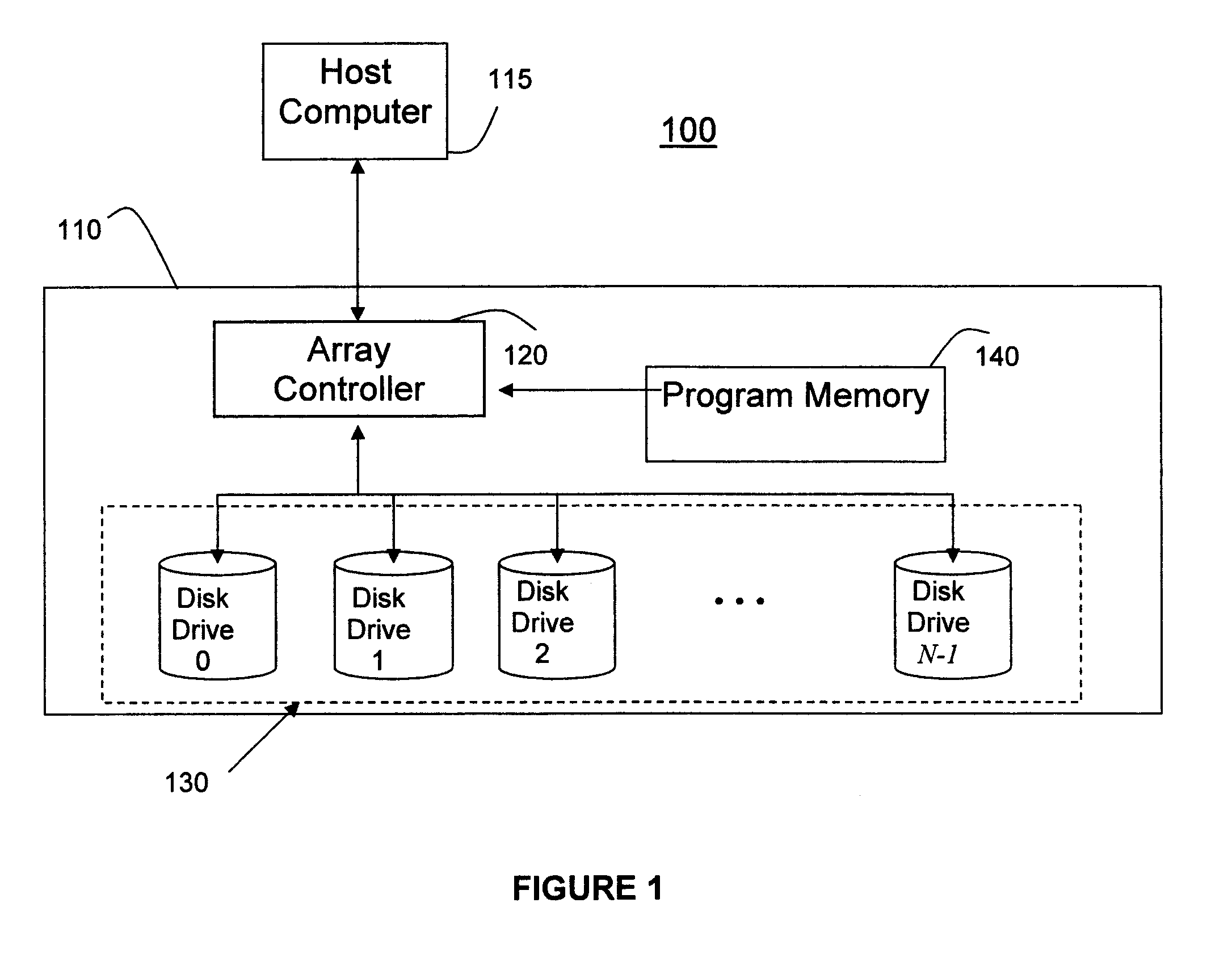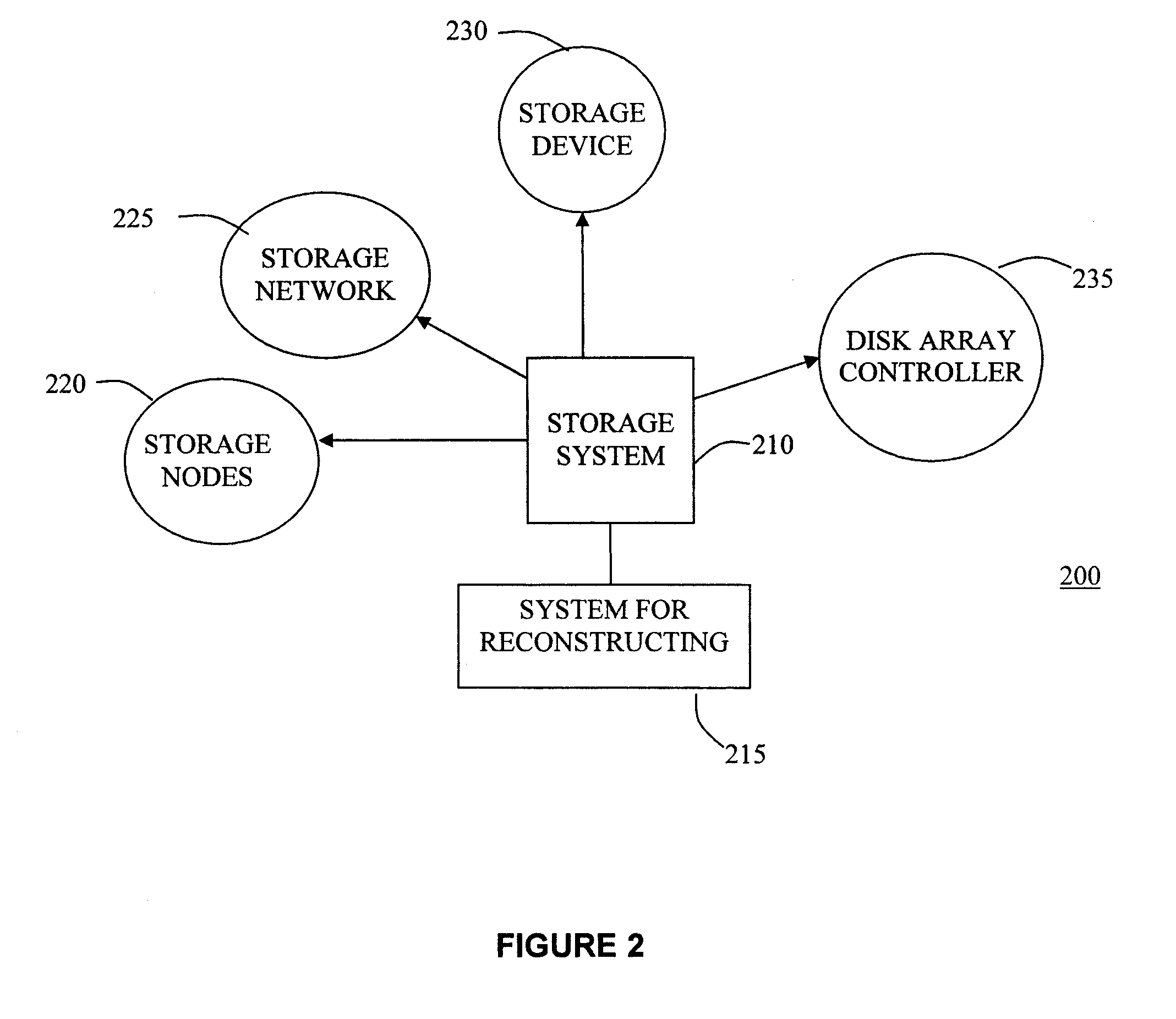System and method for reconstructing lost data in a storage system
a storage system and formula technology, applied in the field of system and method for determining reconstruction formulas for reconstruction of lost data in a storage system, can solve the problems of partial lost data needing to be recovered, requires either additional special purpose hardware or complicated and expensive software, and the published literature generally does not provide algorithms for recovering partial disk data. , to achieve the effect of lowest reconstruction cos
- Summary
- Abstract
- Description
- Claims
- Application Information
AI Technical Summary
Benefits of technology
Problems solved by technology
Method used
Image
Examples
Embodiment Construction
[0038]Referring now to the drawings, and more particularly to FIGS. 1-9, there are shown exemplary embodiments of the method and systems according to the present invention.
[0039]With reference to the Figures, FIG. 1 illustrates an exemplary environment in which a system and associated method (collectively referred to as “the present system”110) can be implemented. A host computer 115 is connected to an array controller 120 of system 110. The host computer 115 stores data on the array controller 120. The array controller uses a program or logic extracted from the program memory 140 to determine redundancy values (hereinafter referred to as parity values) for the data according to the erasure code of the system 110, and stores the data and parity values in the disk drives 130. If sector losses are detected by the array controller 120 when accessing one or more of the disk drives 130, then the array controller calls on additional program instructions from the program memory 140 that im...
PUM
 Login to View More
Login to View More Abstract
Description
Claims
Application Information
 Login to View More
Login to View More - R&D
- Intellectual Property
- Life Sciences
- Materials
- Tech Scout
- Unparalleled Data Quality
- Higher Quality Content
- 60% Fewer Hallucinations
Browse by: Latest US Patents, China's latest patents, Technical Efficacy Thesaurus, Application Domain, Technology Topic, Popular Technical Reports.
© 2025 PatSnap. All rights reserved.Legal|Privacy policy|Modern Slavery Act Transparency Statement|Sitemap|About US| Contact US: help@patsnap.com



